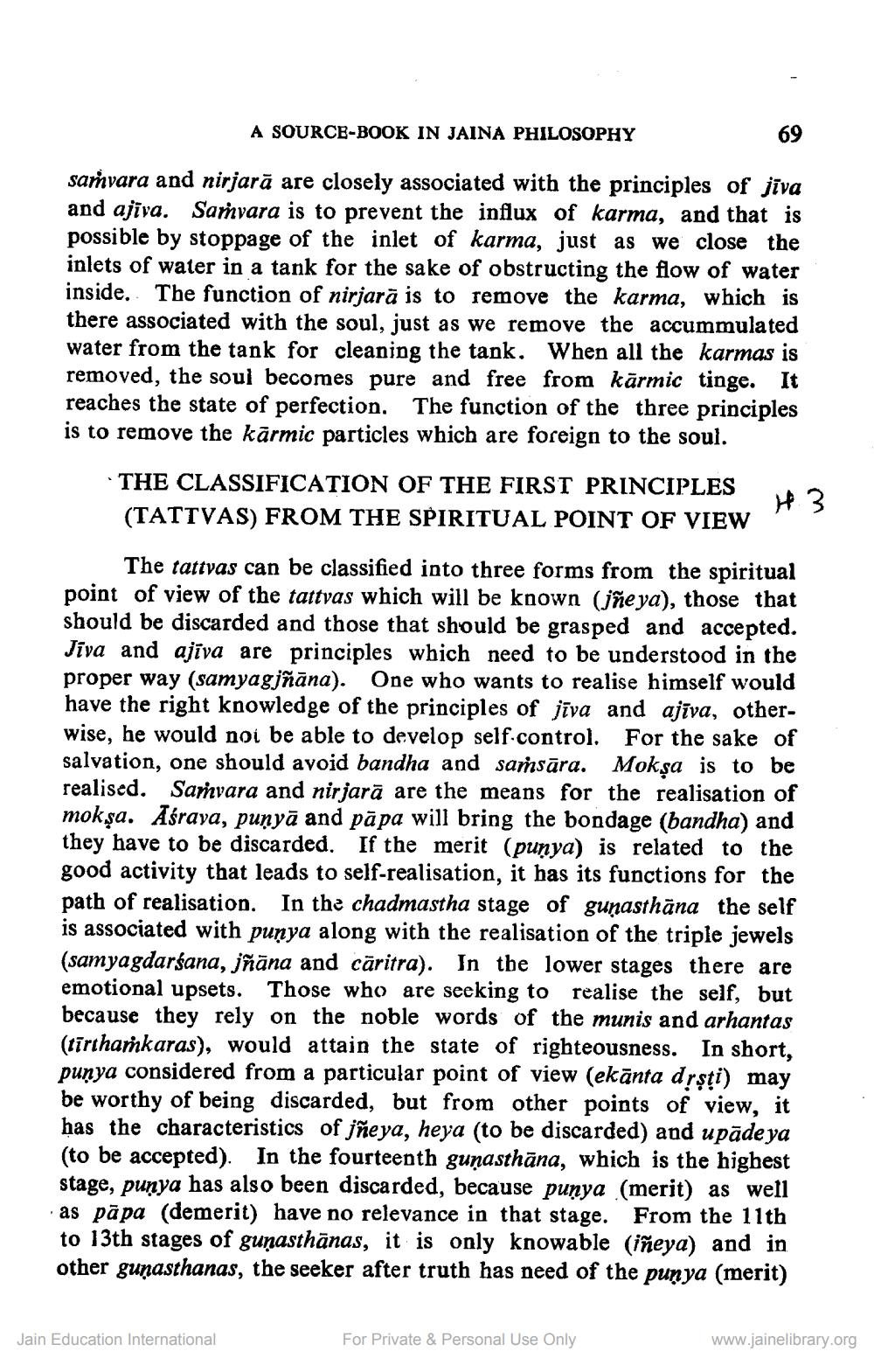________________
A SOURCB-BOOK IN JAINA PHILOSOPHY
saīnvara and nirjară are closely associated with the principles of jīva and ajīva. Sarvara is to prevent the influx of karma, and that is possible by stoppage of the inlet of karma, just as we close the inlets of water in a tank for the sake of obstructing the flow of water inside. The function of nirjarā is to remove the karma, which is there associated with the soul, just as we remove the accummulated water from the tank for cleaning the tank. When all the karmas is removed, the soul becomes pure and free from kārmic tinge. It reaches the state of perfection. The function of the three principles is to remove the kārmic particles which are foreign to the soul.
· THE CLASSIFICATION OF THE FIRST PRINCIPLES
,H3 (TATTVAS) FROM THE SPIRITUAL POINT OF VIEW
The tattvas can be classified into three forms from the spiritual point of view of the tattvas which will be known (jñe ya), those that should be discarded and those that should be grasped and accepted. Jiva and ajīva are principles which need to be understood in the proper way (samyagjñāna). One who wants to realise himself would have the right knowledge of the principles of jīva and ajīva, otherwise, he would noi be able to develop self-control. For the sake of salvation, one should avoid bandha and saṁsāra. Mokșa is to be realised. Sarvara and nirjarā are the means for the realisation of mokşa. Aśraya, punyā and pāpa will bring the bondage (bandha) and they have to be discarded. If the merit (punya) is related to the good activity that leads to self-realisation, it has its functions for the path of realisation. In the chadmastha stage of gunasthāna the self is associated with punya along with the realisation of the triple jewels (samyagdarśana, jñāna and cāritra). In the lower stages there are emotional upsets. Those who are seeking to realise the self, but because they rely on the noble words of the munis and arhantas (tīrthařkaras), would attain the state of righteousness. In short, punya considered from a particular point of view (ekānta drsti) may be worthy of being discarded, but from other points of view, it has the characteristics of jñeya, heya (to be discarded) and upādeya (to be accepted). In the fourteenth gunasthāna, which is the highest stage, punya has also been discarded, because punya (merit) as well as pāpa (demerit) have no relevance in that stage. From the 11th to 13th stages of gunasthānas, it is only knowable (iñeya) and in other gunasthanas, the seeker after truth has need of the punya (merit)
Jain Education International
For Private & Personal Use Only
www.jainelibrary.org




